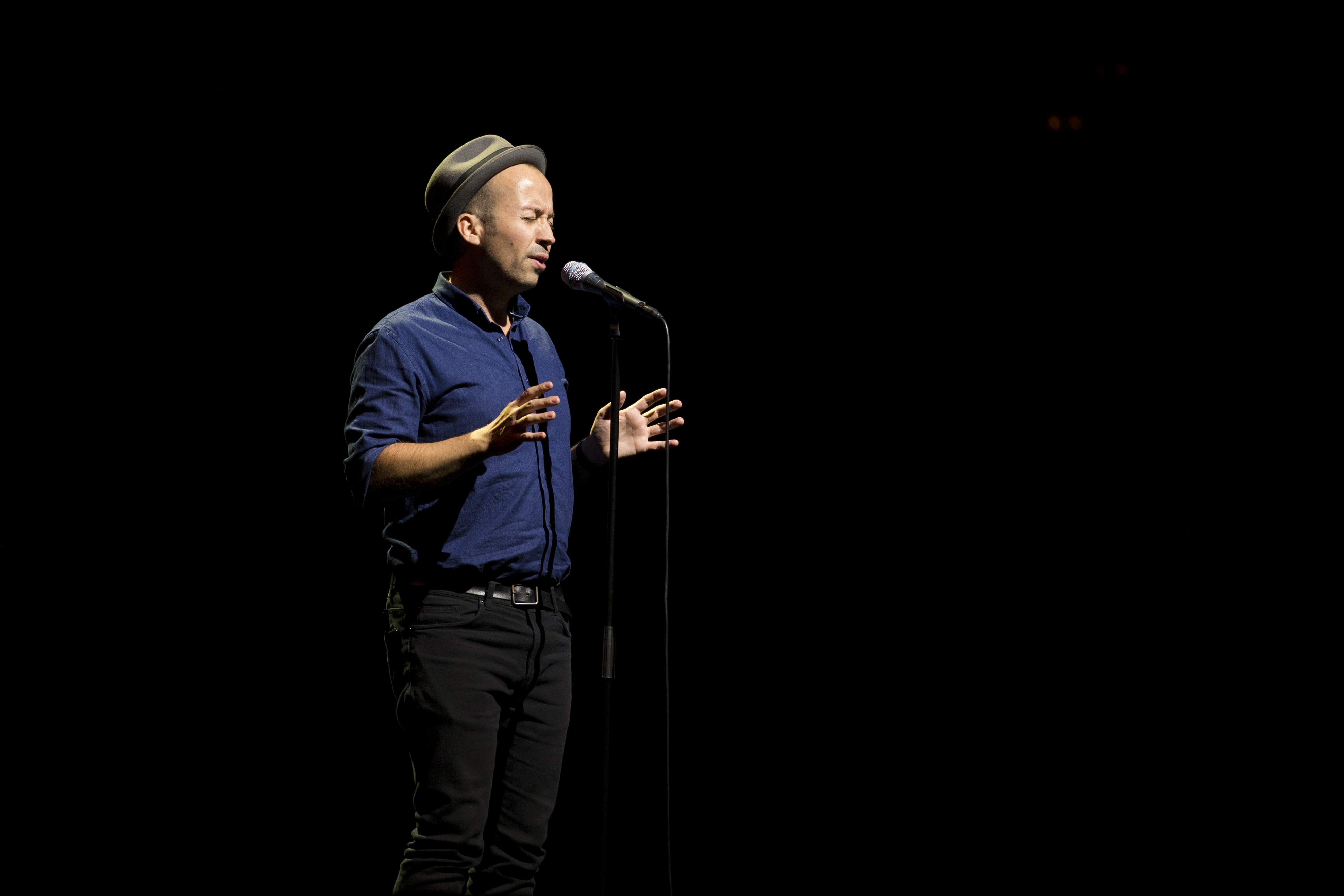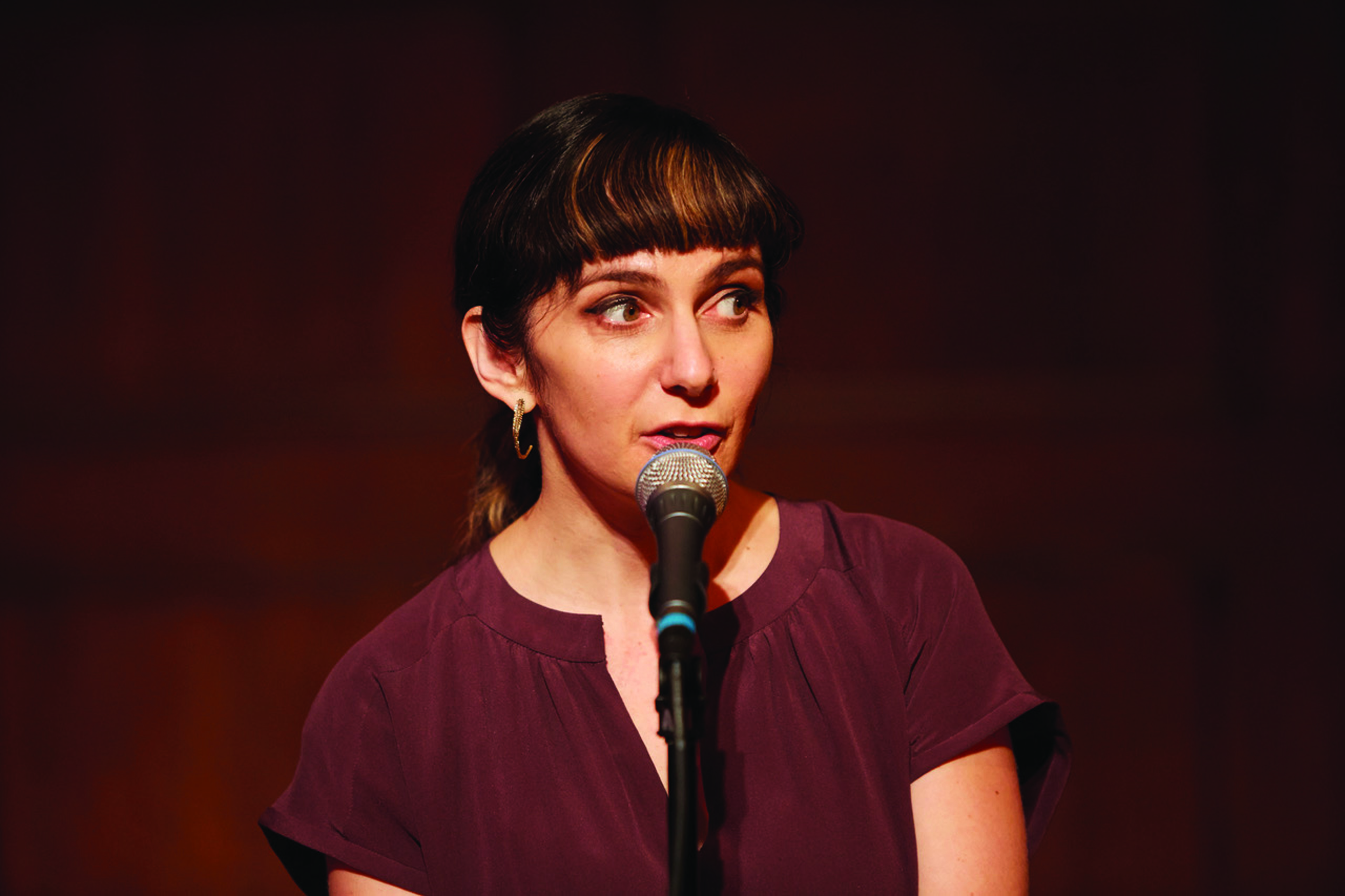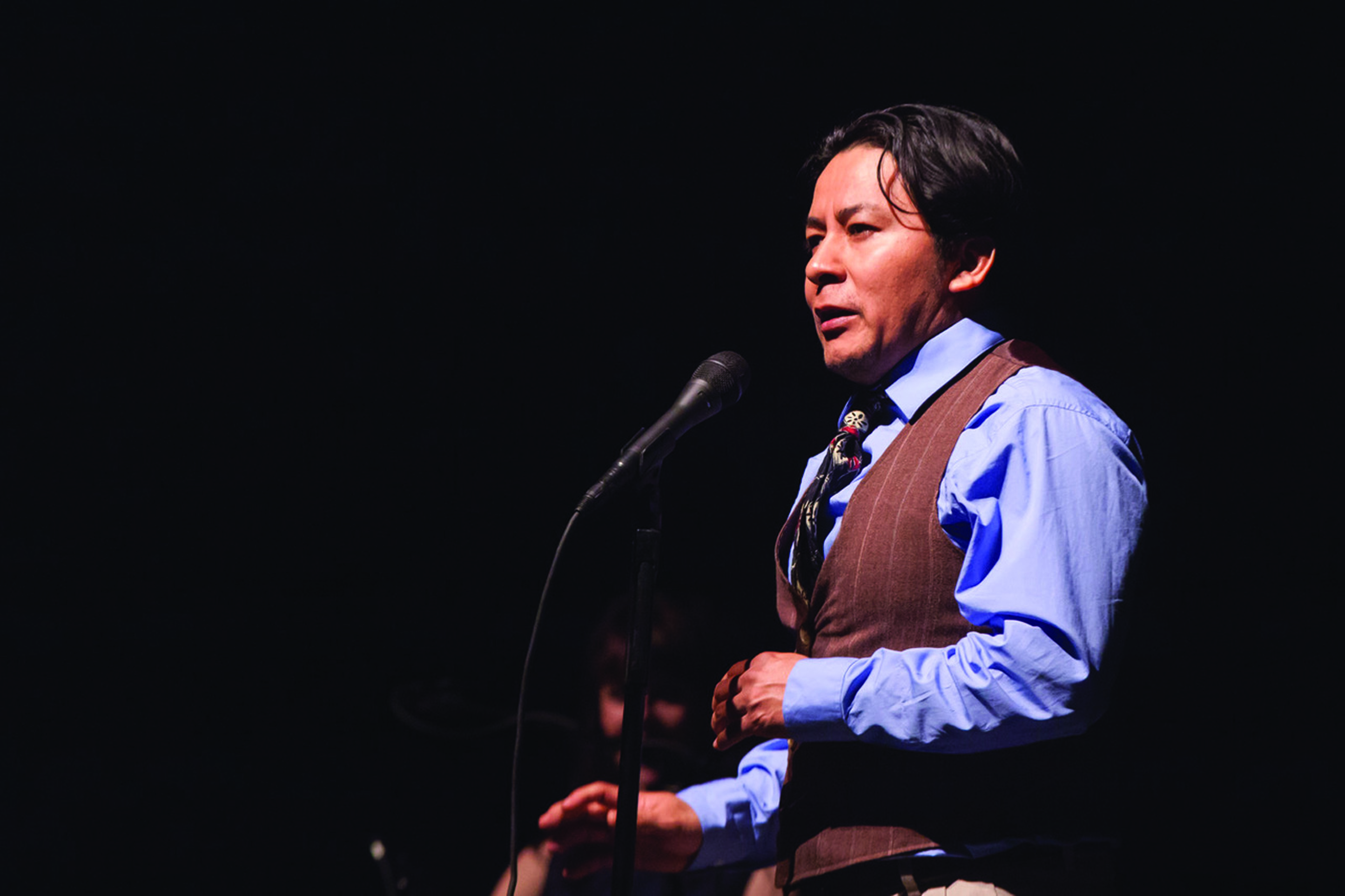Make a Great Escape with The Moth
Live Storytelling Favorite Back for Second-Annual Mainstage Show at Lobero

Some stories take a long time until they’re told, and some storytellers travel a long way to tell them — storytellers such as Nestor Gomez, the award-winning, self-taught writer and poet who will be part of The Moth Mainstage performance at the Lobero Theatre on Thursday, April 13.
Gomez and four other storytellers will share their true tales in a night titled Great Escapes. Gomez’s story is a harrowing one. It tells about how his family fled from Guatemala, a country at the time all but scorched to the ground in a genocidal civil war. It’s also a story about how his family entered America undocumented in search of a better life, a story resoundingly powerful now, at this time, as our government budgets for a wall.
Yet he has only recently brought his personal story to light, having held it silently as he himself was forced to live invisibly. “You’re like a ghost, trying not to be seen, trying not to be heard. You go as fast as you can to your next destination,” he said of his family’s life without documents. While Gomez now wins audience-favorite awards from storytelling competitions across the Midwest, his is not a story he was eager to share. Even after all the proper immigration paperwork was filed, speaking about the experiences of undocumented immigration remains largely “taboo,” he said. “It’s not something you’re proud of or something you want to talk about.”
The Moth offered his first chance to talk about it — and now it is our chance to listen. In the second-annual partnership with KCRW and The Santa Barbara Independent, The Moth Mainstage returns to remind us of the importance of storytelling. Gomez and the other Great Escapes performers will be sharing personal tales that are “intense, timely” truths, said Senior Producer Maggie Cino, who helped craft a program uniquely for Santa Barbara. The other storytellers experienced great escapes in different ways: One is an area native who grew up in a religious household and was forced to undergo conversion therapy; another is a Christian woman who fell for and subsequently married a Muslim man despite her family’s dissaproval.

The stories were selected for their geographical relevance and their thematic unity. One performer at the Lobero this April will be Shauna McGarry, who grew up in Santa Barbara and now has her own storytelling show in Los Angeles. They’re about “escaping, getting out, getting free into a new life,” said Cino. “Stories can really speak to the best of human experience. We’re always trying to get sad stories and funny stories, men and women, different ages, different backgrounds.” What’s more, they offer us in the audience an opportunity to escape, as well — a moment to experience the story of another’s life and escape, for a moment, our own.
The Moth Takes Wing
The origin story of The Moth is one oft-told, but here’s a quick recitation. Growing up in Georgia, novelist and poet George Dawes Green would while away the summer hours, sharing true stories with friends on a screened-in porch, hovered around their shared yarns like the series’ nocturnal namesake to porch-light glows. As a young adult, Green carried this memory to his Manhattan living room, and in 1997 his true-life storytelling living room parties became citywide happenings, and are now nationwide gatherings, story slams, podcasts, and even books.
Today, open-mic Moth StorySLAM competitions are held in 26 cities around the world, and The Moth has “grown and grown and grown,” Cino said, especially through streaming and podcasting technology. Its collaboration with The Independent and KCRW made perfect sense, said Cino. S.B. sets a perfect stage for The Moth, with its intellectually curious and experientially rich population, she said: “It’s a community that has a lot of voices of its own.
The Wonders of The Moth
Great Escapes flutters into town shortly after the release of the new Moth book, The Moth Presents All These Wonders: True Stories About Facing the Unknown, the second print compilation of Moth stories. They range from life-affirming to heartbreaking, from the story of the humble hairdresser who ended up creating David Bowie’s Ziggy Stardust look to a Sierra Leone teenager who must adapt to a more comfortable New York Life after traumatic early years. There’s the one-hit wonder hip-hop star’s brief brush with fame and how he deals with the relatively mundane thereafter, as well as the experiences of Carl Pillitteri, a Fukushima power plant employee who picks up the pieces of a life disastrously interrupted in a sudden collision of earthquake, tsunami, and snow.
Cino says the final 45 stories were whittled down from 200 or so previously curated Moth stories. “One of the interesting things is that some of the most compelling stories in oral form don’t work on the page,” Cino said. It’s a powerful book chock-full of brief, impactful pieces. Some are gut punchers, the kind that yank an unexpected sobbing fit out of your untapped reservoir of sorrows or joys. Some are told by famed folks, like Louis C.K., who tries to navigate an unknowable Moscow through signage he can’t read, while others are told by people like Dr. Francis Crick’s assistant, Dr. Christof Koch, whose quest for scientific knowledge conflicted with his belief in the unknowable divine.
The diversely told compendium makes for a great set of adult bedtime stories. Each story is short enough to read in before-sleep spurts and engaging enough to keep you hungry for more. What’s more, many of them serve as good, comforting reminders that the night you’re shutting your eyes upon or the day you’re waking up to isn’t so bad after all, or, if it is, at least you will be able to get through it, as others did before you.
Having worked now with The Moth for more than seven years, Cino has seen a few common threads among storytellers. “The big thing they all have in common is vulnerability, a willingness to just really get up there and just be very straightforward and open about moments that were really difficult,” she said.
Not all stories talk about high stakes, and not all are high drama. The Moth’s diversity is its strongpoint, Cino said. Its underlying binding agent relies on the endlessly inventive capacity of humans to adapt to unexpected circumstances. Moth stories show life “on a very different scale with very different people,” Cino said, but all touch on that “determination to get through our day — our ability, as people, to kind of throw our arms around life when we’re thrown a curveball.”
So You Want to Tell a Story
The Moth has no guidelines as to who or what kind of stories can be submitted through its pitch line (where people pitch story ideas online or through a toll-free hotline), so long as the stories are true, both in the telling and to the teller. When you hear a good Moth story, “I feel like I just witnessed a person being their truest self,” said David Crabb, the two-time Moth storytelling slam winner who will host the Great Escapes evening. He thinks the telling of the story should sound the same as if people were just sitting in a booth at a bar and talking. “The Moth really wants people to be their pure self. They want to capture whatever it is about you that is engaging and specific to you, and they want to get that onstage.”
“The big thing is to not try to look cool,” Cino said. “‘I took a trip, and I had an amazing time’ is an interesting Facebook status update, but it doesn’t land as much as someone who said, ‘I planned my dream trip and thought it had all worked out, but it turned out as much as I wanted to impress this guy I was taking the cross-country biking trip with, I hadn’t been on a bike for five years, and I was really out of shape and went for days being exhausted.’ Openness and the courage to be oneself lends itself to a kind of shared kindness, Cino said. “Nobody really gets to the final stage of the curated series if you’re a jerk.”

Stories get a trial run in storytelling slams across the nation, with the names of storytellers drawn out of a hat. Once a story is selected for a Mainstage show, a director or story coach like Cino will help the teller massage their message. “Some care in crafting goes into just creating a situation where a person can get up and say, ‘This is really what happened to me,’” Cino said. Story coaches will dig for details, as Cino did recently to shape the narration of a Muslim friend who recounted her decision to start and later stop wearing a hijab. “So what happened in between?” Cino asked. “What was the moment you felt resolved to continue wearing it, and what was the step that made you decide to stop? What did your parents say? Did you throw out your blow-dryer?”
Crabb, who has also done a lot of story coaching, loves how The Moth showcases the individuality of each storyteller. “What makes storytelling so special is you can witness the same sort of archetypical story again and again” and have it be unique each time, he said. “Even if there were three types of stories in the whole world, 10 different people would tell one of those types 10 different ways.” Crabb, whose story about growing up as a gay Goth teen in Texas earned him national acclaim, now teaches storytelling to all kinds of audiences, including corporate storytelling workshops. “I really enjoy it because you’re teaching people the basics of structure, and that applies across the board, whether you’re selling Apple computers or toilet flush handles,” Crabb said. “Even if someone doesn’t get the application down, you can tell they left with a keener eye toward telling stories to their family or when they go on a fishing trip.”
Crabb advises his storytellers to mine their life for extremes, like the challenges of growing up helping your wheelchair-bound mother or the year you worked with primates in Africa while studying abroad. But just as compelling can be the drama in everyday moments, though it takes practice to find the stories in the small stuff. Moments that may not seem to matter to us now may come back in meaningful new ways, Crabb added. “Just because you think you get a story right the first time and you’re done with it, it’s still in the world and can still change, and it can change your future,” he said. For example, he once had told the story of a deceased childhood friend on NPR, and days later the friend’s sisters and mother called. “You worry about the way you portray people in the world, but they thanked me and said, ‘When you laughed like him, I remembered his laugh … and you showed me parts of his life that I never got to see.’”
Stories Can Really Speak
Though he has won multiple audience awards at The Moth and other storytelling venues, speaking did not come easily to Gomez, who stuttered as a child. He grew up in a family of worry-doll makers who made tiny muñeca quitapena to help ward off the nightmares of young tourists. “It was either send this kid to speech therapy or put food on the table,” Gomez recalled. When widespread violence overtook Guatemala, tourism disappeared. “We lost a way to make money. We didn’t have any thoughts of freedom,” he said about the decision to come to this country. But as he was learning English here, he was also losing his stutter. “A childhood friend had seen my website, and he was like, ‘I cannot believe he’s out there telling stories. Everybody made fun of him, and now he’s out there telling stories,’” said Gomez, who also makes a living selling customized T-shirts through Threadless. “I have been able to make my mother proud, and that’s the best feeling.”
Gomez’s tale is an especially poignant inclusion in S.B.’s Great Escapes program, as President Donald Trump’s policies and rhetoric continue to strike fear in the hearts and lives of the many undocumented men, women, and children who live among us. Of the current political reality, Gomez said, “The people who have power are afraid to share it with other people, and, I’m sad to say, I’m not surprised. It’s history repeating itself; every time that something is accomplished, somebody comes and pushes it back again. We were too complacent, too happy with the dream of ‘Yes, you can’ to realize there were a lot of people that said, ‘No, you cannot.’”
But Gomez’s story is not only about immigration alone. “I’m talking about my family, my fears, my sense of survival, my sense of dedication between me and my siblings,” Gomez said. “The audience may not have the same experience, but they can put themselves in my place because they have families, they have dreams, they have fears. As human beings, we all share these experiences.”
“People who are diverse or widely different from each other are really not that different once we get in a room and tell stories,” Crabb said. “The woman who’s trying to win the yoga competition and the guy trying to shoot the biggest 10-point buck in the hunting season — those stories are kind of the same even though they seem so opposite.”
And true to The Moth’s name, sometimes the warmth of stories is all we have to cling to in the darker hours. As with many Moth tales, the stories in Great Escapes remind us of the endurance of the human spirit, Cino said. “I’m constantly just really awed by our ability as humans to not just survive but to persevere, that ability to get through something and continue,” she said. “That ability connects people more than it divides.”




